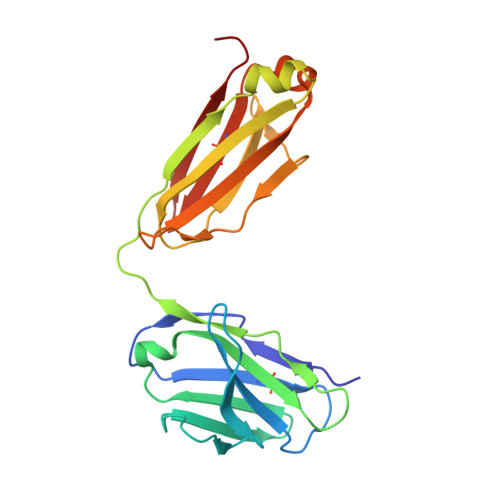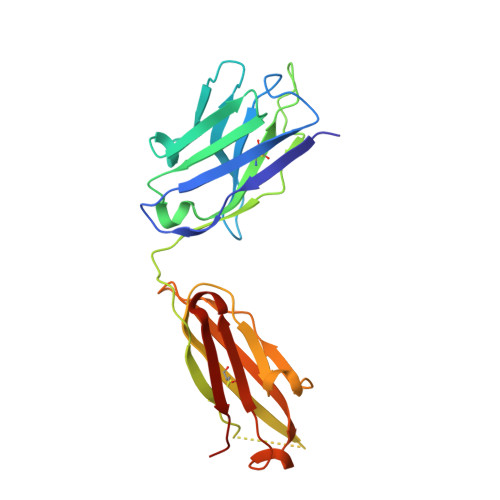Robust production of monovalent bispecific IgG antibodies through novel electrostatic steering mutations at the C H 1-C lambda interface.
Bagert, J.D., Oganesyan, V., Chiang, C.I., Iannotti, M., Lin, J., Yang, C., Payne, S., McMahon, W., Edwards, S., Dippel, A., Hutchinson, M., Huang, F., Aleti, V., Niu, C., Qian, C., Denham, J., Ferreira, S., Pradhan, P., Penney, M., Wang, C., Liu, W., Walseng, E., Mazor, Y.(2023) MAbs 15: 2273449-2273449
- PubMed: 37930310
- DOI: https://doi.org/10.1080/19420862.2023.2273449
- Primary Citation of Related Structures:
8TI4, 8TJF - PubMed Abstract:
Bispecific antibodies represent an increasingly large fraction of biologics in therapeutic development due to their expanded scope in functional capabilities. Asymmetric monovalent bispecific IgGs (bsIgGs) have the additional advantage of maintaining a native antibody-like structure, which can provide favorable pharmacology and pharmacokinetic profiles. The production of correctly assembled asymmetric monovalent bsIgGs, however, is a complex engineering endeavor due to the propensity for non-cognate heavy and light chains to mis-pair. Previously, we introduced the DuetMab platform as a general solution for the production of bsIgGs, which utilizes an engineered interchain disulfide bond in one of the C H 1-C L domains to promote orthogonal chain pairing between heavy and light chains. While highly effective in promoting cognate heavy and light chain pairing, residual chain mispairing could be detected for specific combinations of Fv pairs. Here, we present enhancements to the DuetMab design that improve chain pairing and production through the introduction of novel electrostatic steering mutations at the C H 1-C L interface with lambda light chains (C H 1-C λ ). These mutations work together with previously established charge-pair mutations at the C H 1-C L interface with kappa light chains (C H 1-C κ ) and Fab disulfide engineering to promote cognate heavy and light chain pairing and enable the reliable production of bsIgGs. Importantly, these enhanced DuetMabs do not require engineering of the variable domains and are robust when applied to a panel of bsIgGs with diverse Fv sequences. We present a comprehensive biochemical, biophysical, and functional characterization of the resulting DuetMabs to demonstrate compatibility with industrial production benchmarks. Overall, this enhanced DuetMab platform substantially streamlines process development of these disruptive biotherapeutics.
Organizational Affiliation:
Biologics Engineering, AstraZeneca, Gaithersburg, MD, USA.















